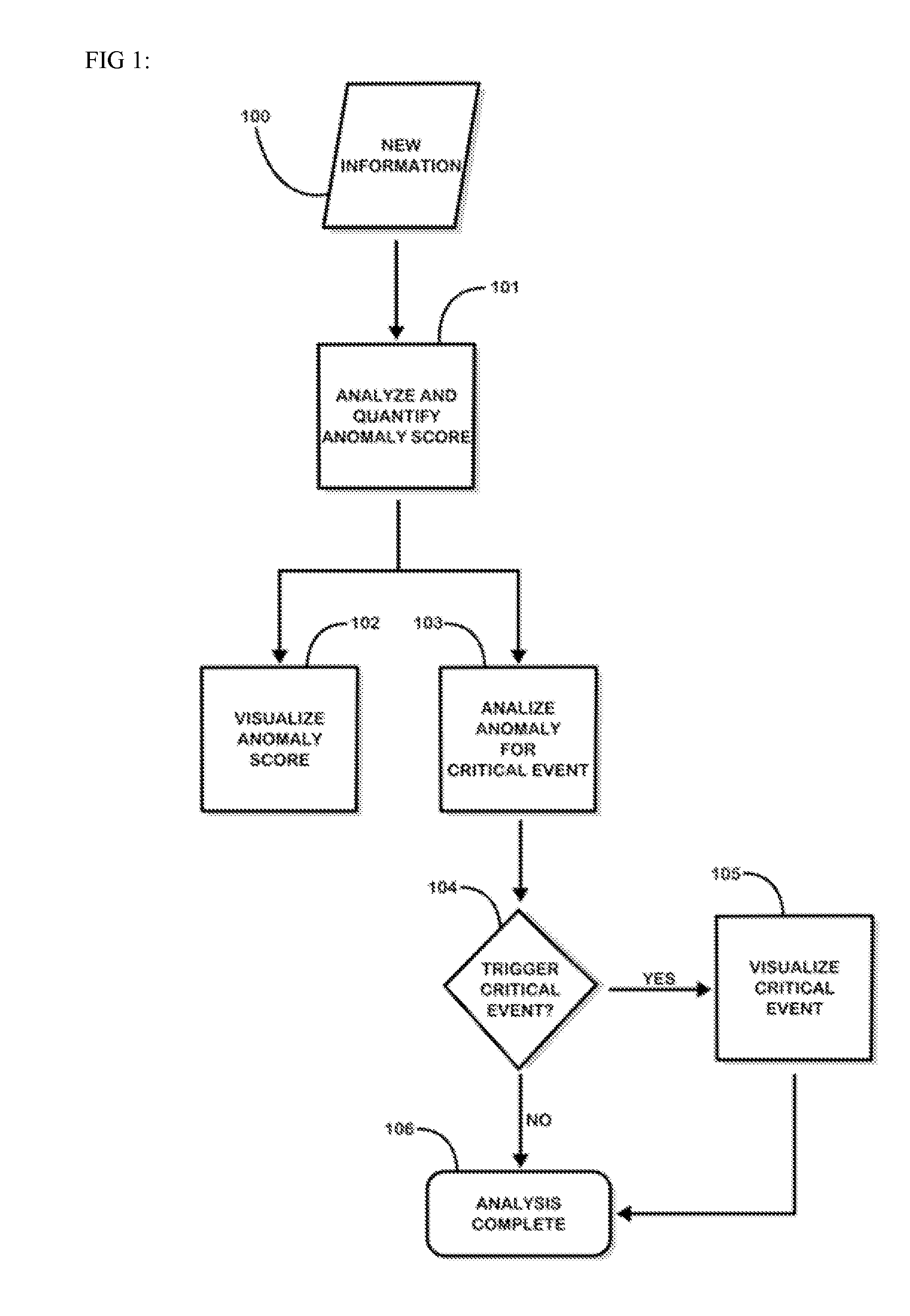Information fusion for multiple anomaly detection systems
a technology of anomaly detection and information fusion, applied in the field of dynamic anomaly analysis, can solve the problems of limiting the performance of anomaly detection systems, high false alarm rate of systems, etc., and achieve the effect of quick comprehension
- Summary
- Abstract
- Description
- Claims
- Application Information
AI Technical Summary
Benefits of technology
Problems solved by technology
Method used
Image
Examples
Embodiment Construction
[0039]The present invention is used to analyze and assess information against how anomalous it is. The invention then allows for the assessment to be visualized through a user interface. FIG. 1 represents a flowchart diagram of the steps and processes involved in anomaly detection and visualization within a single anomaly detection system. New information 100 represents any form of structured and unstructured text and data that is to be processed by the system. The new information is passed to the anomaly detection engine, where it will be analyzed and the anomaly score will be determined 101. Upon completion, the score is wrapped in a meter object and is passed to the user interface for visualization 102. The anomaly score is further analyzed by the critical event engine to determine if any fusion rules have been triggered 103, 104. If a rule has been triggered, a critical event object is created and passed to the user interface for visualization 105. Finally, the process is comple...
PUM
 Login to View More
Login to View More Abstract
Description
Claims
Application Information
 Login to View More
Login to View More - R&D
- Intellectual Property
- Life Sciences
- Materials
- Tech Scout
- Unparalleled Data Quality
- Higher Quality Content
- 60% Fewer Hallucinations
Browse by: Latest US Patents, China's latest patents, Technical Efficacy Thesaurus, Application Domain, Technology Topic, Popular Technical Reports.
© 2025 PatSnap. All rights reserved.Legal|Privacy policy|Modern Slavery Act Transparency Statement|Sitemap|About US| Contact US: help@patsnap.com



